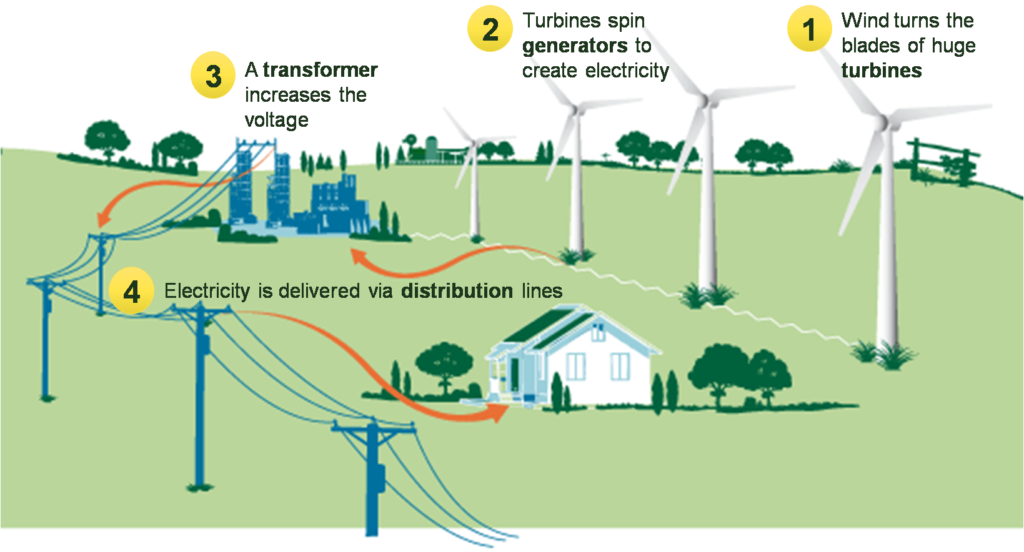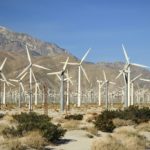Movement is kinetic energy. One of the main natural movements that takes place on worldwide level is air in motion: wind. The power from air flow can be harnessed through wind turbines. Their mechanical movement is either used directly to power machinery like pumps or indirectly to drive electrical generators.
Wind Electricity
Wind turns turbines. They drive electrical generators which will in turn supply electricity into the grid or to homes directly.
We can differentiate between on- and offshore wind turbines depending on their location:
Onshore Generating onshore power is rather inexpensive and thus competitive with other energy sources. It is used on both big and small-scale.
| Offshore 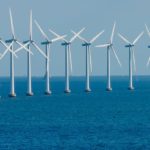 Offshore wind is usually stronger and steadier than on land which means more electricity can be generated. However, construction and maintenance costs of wind turbines located in water are considerably higher. |
If we look at the whole of Africa the possible energy supply through wind is bigger than the continent’s demand. This means theoretically the need for electricity could be met with wind only. 15% of Africa’s wind potential is characterized as a high-quality resource meaning that you can generate lots of energy with little effort.
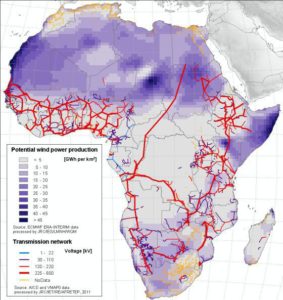
Wind is not as uniformly distributed over the continent as sunbeams, but it is only specific regions where the use of wind power makes sense. Malawi is one of the countries in East Africa with very good wind resources. However, even throughout one country there are variations in wind strength depending on the topographical features such as coastal lines, mountain ranges etc. Before the construction of wind turbines there is usually wind speed detection for one year to choose the right spot to take full advantage of them.
Onshore wind is often characterized by a strong variation over a short period of time: one day wind can be really strong and you can generate lots of energy and on the next day there could be limited wind at times not even a single breeze to turn the turbine. Therefore, wind power is often combined with other energy sources such as solar or implemented alongside other power management techniques such as trading with partners in order to get consistent, reliable energy supply.
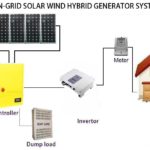
In 2017, wind power reached 4.4% of worldwide electricity production, with a rising trend. In Africa the installed capacity through wind power was about 4.500MW but about half of it was generated only in South Africa. Apart from that Egypt, Morocco, Ethiopia and Tunisia played a notable role.
Malawi does not use its wind resources for the national electricity capacity so far. It has been conducting wind resource assessments in different areas across the country for the last years to come up with a wind resource map. According to Energy Affairs Malawi the plan is to develop wind farms in the future as it is appreciated for being a relatively cheap and environmentally friendly energy source that can be put up in a short period of time. However, it is only seen as a minor supplement to the hydro generation system and as such it is not focused too much.
Keep yourself updated on any relevant news related to renewable energies on the platform Conrema.org! 😊

